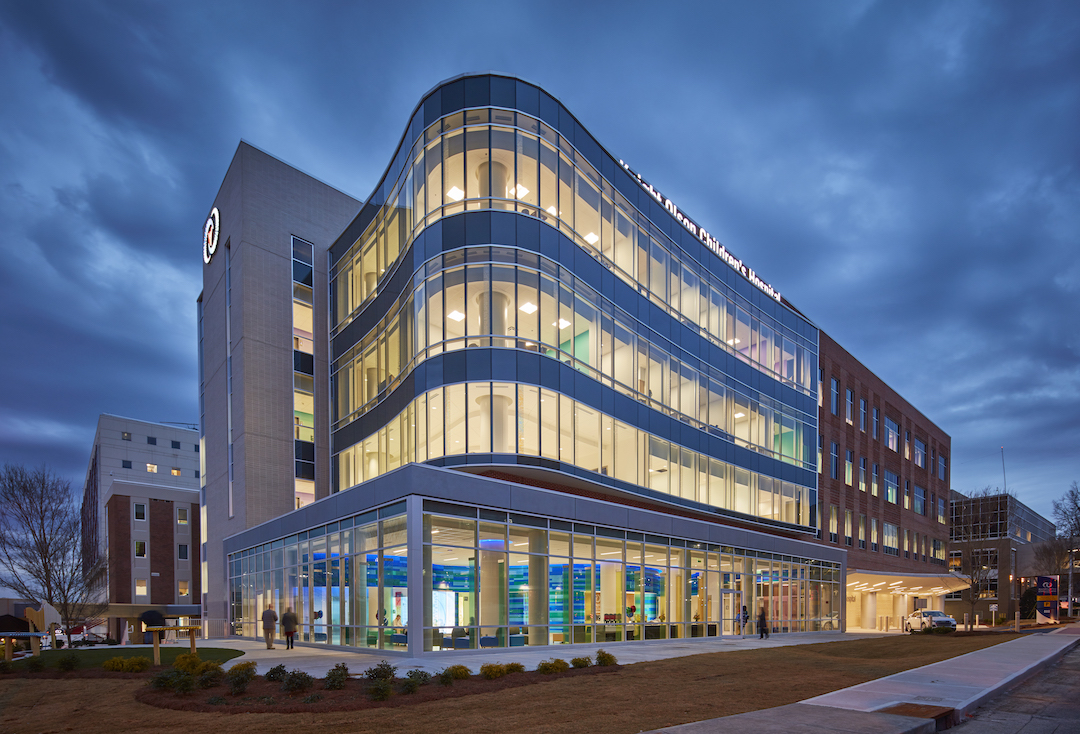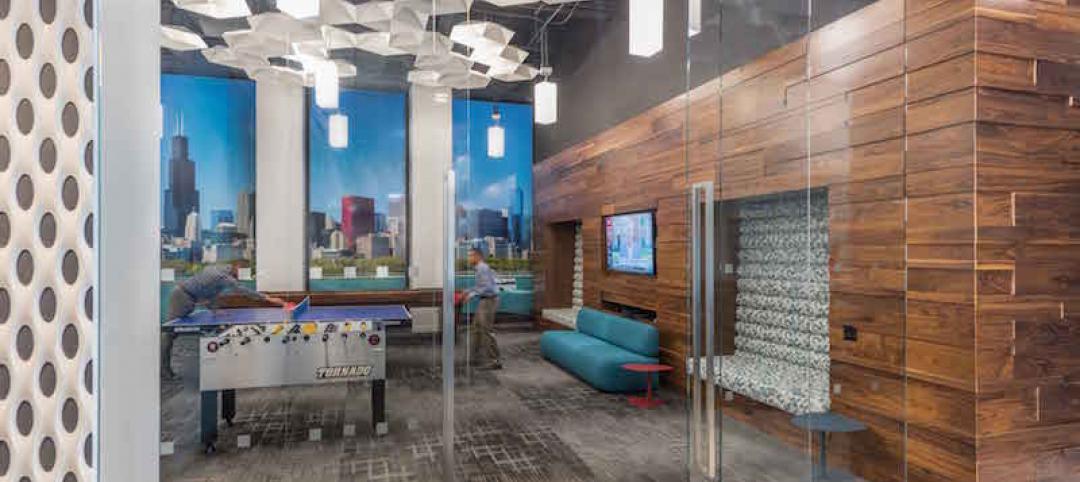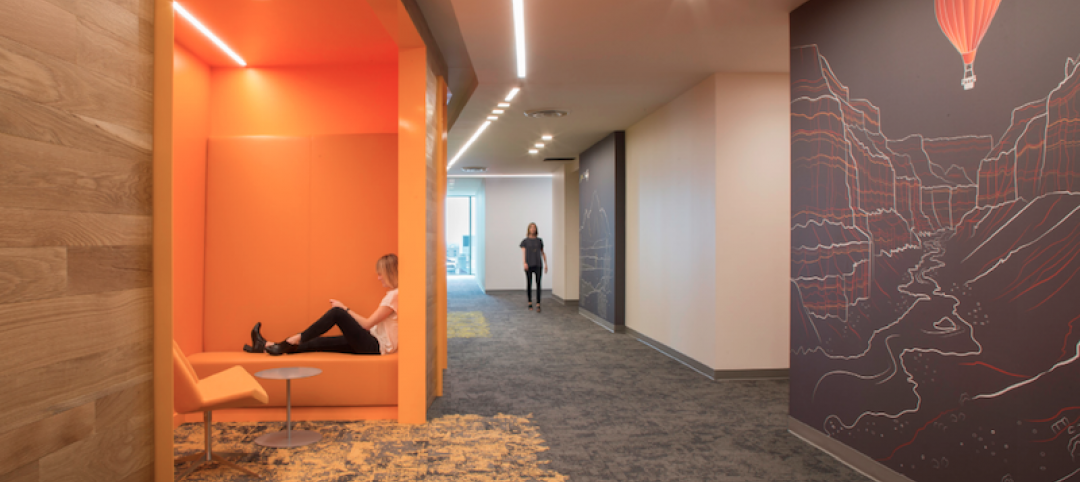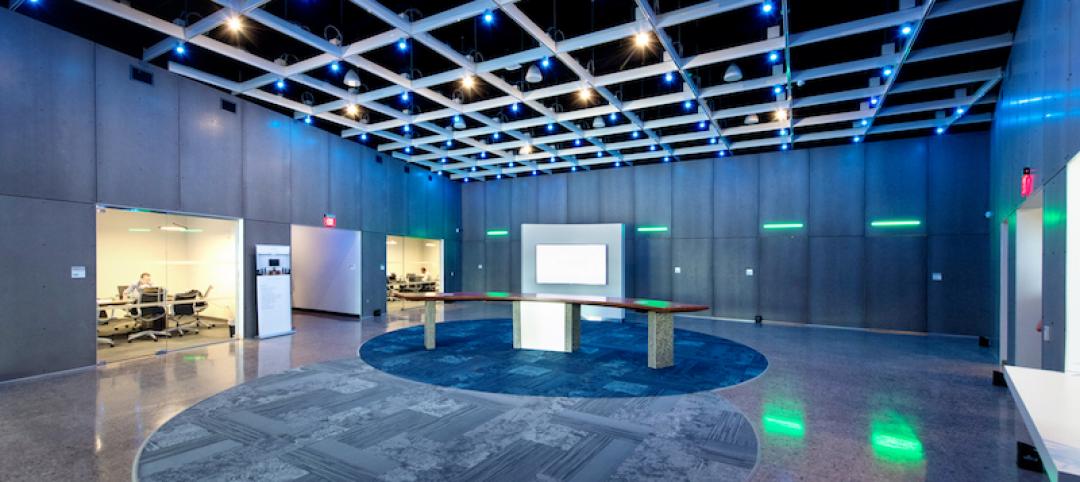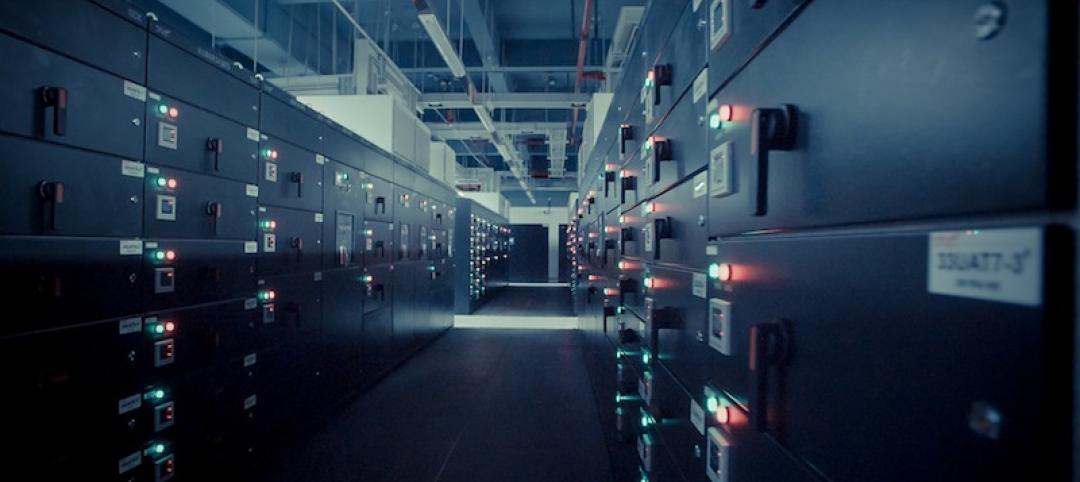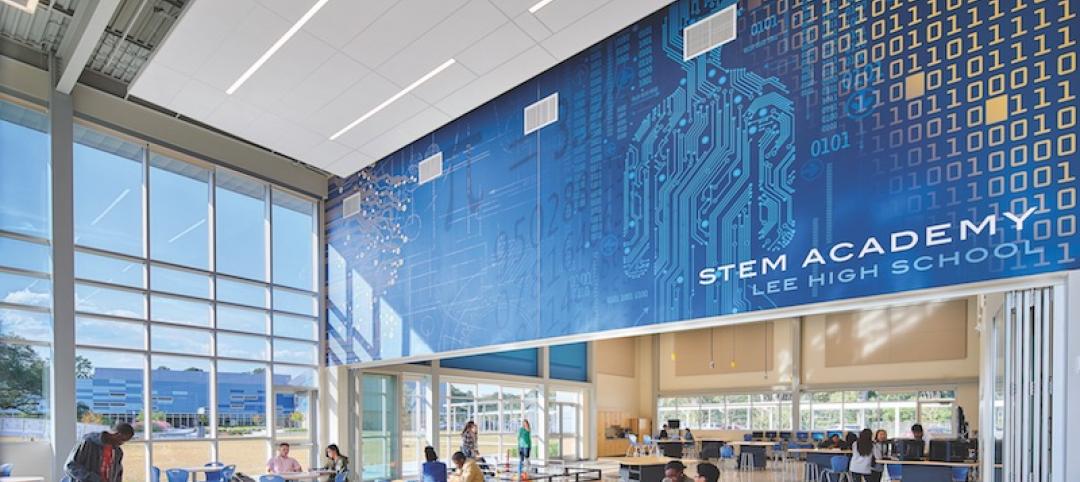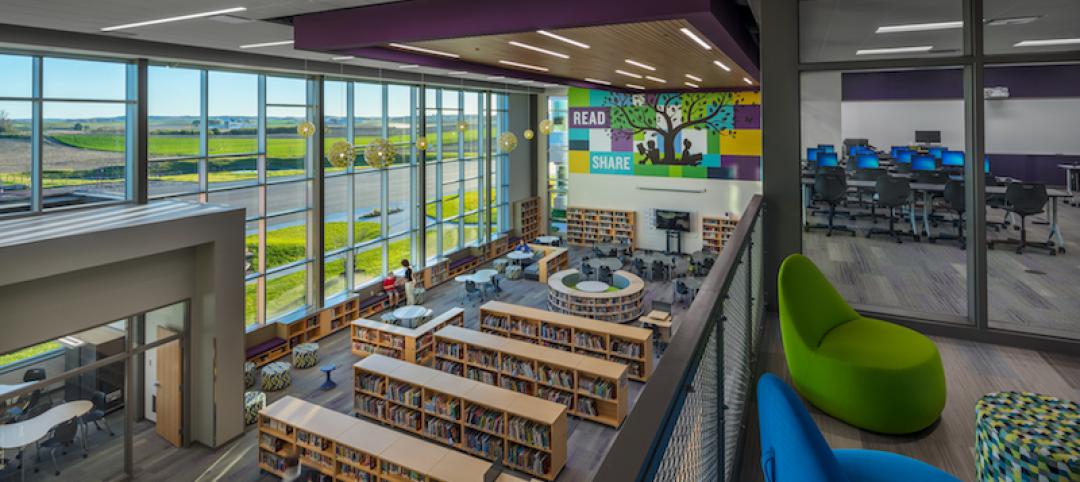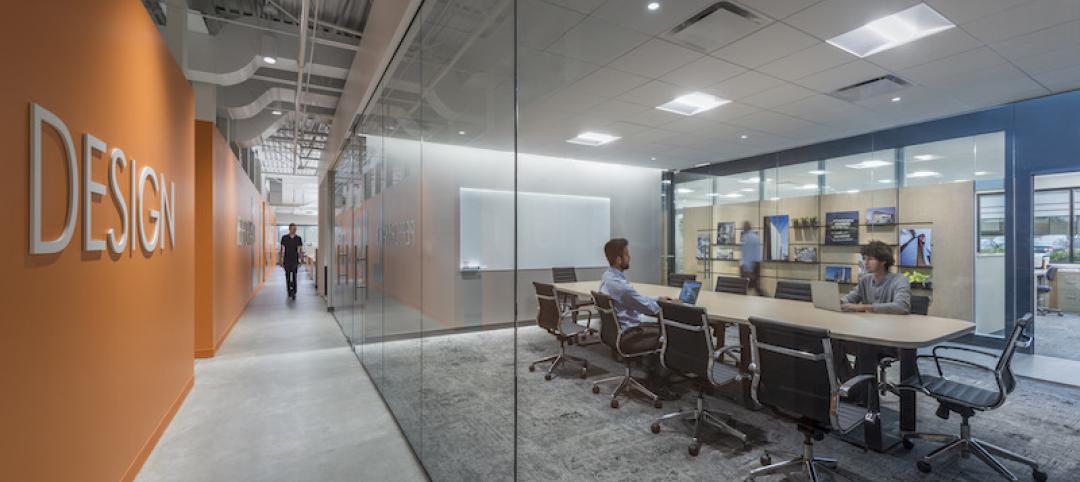Upgrades to medical equipment and systems and improvements to building systems are the current focus in the healthcare market.
Healthcare consolidation contributes to this trend. After larger health systems acquire smaller, rural facilities, there’s typically a push to renovate them and upgrade technology, says Robin Savage, President/COO, Robins & Morton. “A lot of this work is centered on diagnostic and imaging and service areas like women’s services,” says Savage.
The next big advancement: the so-called “smart hospital.” With multiple systems able to communicate with each other, such a building perform functions like another medical practitioner.
At the $1.6 billion Mackenzie Vaughan Hospital, now under construction in Toronto, building systems and medical technology will be linked. When a patient’s monitor detects a heart attack, it will send a silent alert to critical care response team members equipped with wearable location services badges. The badges will automatically override elevator controls, giving team members express service to the patient’s floor.
ALSO SEE: Top 150 Healthcare Architecture Firms
ALSO SEE: Top 90 Healthcare Engineering Firms
ALSO SEE: Top 100 Healthcare Construction Firms
Engineering giant WSP is examining ways to deploy Amazon Echo to aid HIPAA compliance and patient safety, says WSP’s Gary Hamilton, Senior Vice President and Eastern Healthcare Lead. Alerts could be sent to surgical recovery nurses every four hours to ensure that patients receive pain medication on time.
Smart hospitals will also boost energy efficiency. Artificial intelligence would analyze data from building management systems and scheduling software to determine how best to use space. Knowing that a patient was just discharged, smart building technology could turn down the HVAC in the empty room and punch it back up when the room is scheduled to be reoccupied.
Using fiber optic systems throughout the building, MEP systems can be integrated with low-voltage systems such as AV and alarm systems. Once linked, these systems can enable smart hospital features. “In five years, the occupant-aware building is going to be commonplace in healthcare,” says Hamilton.
BIM and virtual reality are being used to analyze how healthcare medical professionals use space. “As we design key clinical spaces, we are mapping travel distances,” says Kate Renner, AIA, LEED AP BD+C, Design Researcher and Architect, HKS Inc. The data populates detailed behavior maps, which inform the creation of digital renderings that can be experienced in VR.
HKS also creates full-scale cardboard mockups of key spaces such as inpatient rooms and surgical suites that provide valuable feedback from medical personnel on the positioning of equipment, cabinetry, and sinks.
Coping with natural disasters also figures into the early stages of programming and design. A sudden influx of patients from a hurricane, tornado, or earthquake could be accommodated if emergency rooms were equipped with double medical gas outlets in headwalls so that trauma victims could be doubled up in each room. Post-anesthesia care units outfitted with extra medical gas and headwall capacity could also function as emergency care units following a disaster, says Renner.
Structural dampeners and reinforced stabilizers for overhead MEP systems are being required in earthquake-prone areas. After Mercy Hospital, Joplin, Mo., was destroyed by a tornado in 2011, collapsed MEP assemblies were found to be the major source of damage, says Renner. To make the replacement structure more resilient, the design also included reinforced stabilizers for the MEP systems, laminated safety glass, reinforced stairwells, battery-powered lights, and wall hooks that can be used to ease patients down stairs with sleds and ropes.
Owners of critical facilities have increased their supply of water storage and generator fuel, Hamilton says. The Veteran’s Administration now requires a two-week supply of water, not the previous one-week standard.
Offsite construction ON THE UPSWING in healthcare sector
Prefab construction of mechanical systems continues to grow. “At least one headwall manufacturer is now including ductwork and insulation,” says Hamilton. “At most trade shows, we’re seeing four or five prefab bathroom manufacturers.”
Prefab exterior wall systems are an increasingly compelling option, says Tim Johnson, Vice President/Division Manager, Brasfield & Gorrie. Evaluating prefab options is a task owners now count on their project teams to assess.
Lean construction is also in demand. “At least three out of four RFPs that we see address Lean management and Lean construction,” Savage says. Contractors must be involved earlier than ever to provide cost and constructability analysis. “Architects and GCs are now being selected at about the same time,” says Johnson.
“During pre-construction, owners require you to commit expensive and knowledgeable resources at the beginning—as much as 12 months before breaking ground,” says Savage. The extra effort does make for an improved architect-contractor relationship, says Hannah Wickham, Vice President, Business Development, Brasfield & Gorrie.
MORE FROM BD+C'S 2019 GIANTS 300 REPORT
Related Stories
Giants 400 | Oct 17, 2017
Top 60 office engineering firms
AECOM, WSP, and Thornton Tomasetti top BD+C’s ranking of the nation’s largest office sector engineering and EA firms, as reported in the 2017 Giants 300 Report.
Giants 400 | Oct 17, 2017
Top 110 office architecture firms
Gensler, Jacobs, and HOK top BD+C’s ranking of the nation’s largest office sector architecture and AE firms, as reported in the 2017 Giants 300 Report.
Giants 400 | Oct 16, 2017
Data center market forecast: Clearly cloudy
Look for mission-critical construction to double in the next few years.
Giants 400 | Oct 12, 2017
Top 30 data center engineering firms
Syska Hennessy Group, AECOM, and Morrison Hershfield top BD+C’s ranking of the nation’s largest data center sector engineering and EA firms, as reported in the 2017 Giants 300 Report.
Giants 400 | Oct 11, 2017
Top 25 data center architecture firms
Jacobs, Corgan, and Gensler top BD+C’s ranking of the nation’s largest data center sector architecture and AE firms, as reported in the 2017 Giants 300 Report.
Giants 400 | Oct 9, 2017
Job-ready learning: The newest K-12 schools nudge students toward careers
Some long-term K-12 trends—like beefing up safety and security, and designing for more natural light and outdoor learning space—are still in vogue.
Giants 400 | Oct 9, 2017
Top 80 K-12 construction firms
Gilbane Building Co., Balfour Beatty US, and Skanska USA top BD+C’s ranking of the nation’s largest K-12 sector contractors and construction management firms, as reported in the 2017 Giants 300 Report.
Giants 400 | Oct 6, 2017
Top 40 K-12 engineering firms
AECOM, IMEG/KJWW/TTG, and STV top BD+C’s ranking of the nation’s largest K-12 sector engineering and EA firms, as reported in the 2017 Giants 300 Report.
Giants 400 | Oct 6, 2017
Top 90 K-12 architecture firms
Stantec, DLR Group, and PBK top BD+C’s ranking of the nation’s largest K-12 sector architecture and AE firms, as reported in the 2017 Giants 300 Report.
Giants 400 | Oct 5, 2017
On wings of gold: Alternative financing schemes are propelling the high-flyin’ air terminals sector
The $4 billion renovation of New York City’s LaGuardia Airport is the first major U.S. aviation project delivered using a public-private partnership (P3) model.


